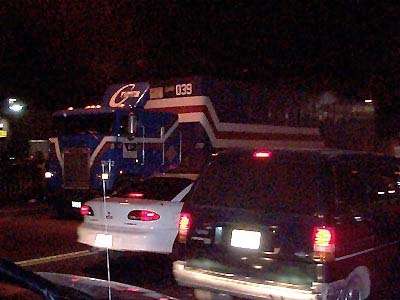Borderland
When you read this I will probably be somewhere between Austin and San Antonio, on the way to Brownsville, Zapata, Laredo, Del Rio, El Paso, Tucson, Yuma, and San Diego. I’ll be riding a 1996 BMW motorcycle and toting my laptop along with a digital camera and recorder. If I can get the timing right, I might even get to places like Terlingua, Presidio, Marfa, and Fort Davis as I follow the 2,000 mile long border between the United States and Mexico.
Why am I doing this?
Because the border is the base of America’s growth wedge— a vast triangle whose apex is Denver, a triangle that encompasses both our fastest growing urban areas and our most remote and untouched lands. It holds the surging expansion of Phoenix, the growth of San Antonio, and the recovery of San Diego. It also holds the expanse of Big Bend, the Indian lands in Arizona, and the mountains of New Mexico. This triangle is our biggest cultural and economic intersection, bringing changes as basic as the displacement of ketchup by salsa and as esoteric as Mexican art. It is the newest, oldest, and by far the largest, American melting pot.
It also confronts us, along every mile of that border, with an odd reality: If the Immigration Service ever succeeded at stopping the human river that crosses the border seeking work and opportunity in America, businesses and families from Los Angeles to Dallas to Denver would have trouble getting through the day. Nothing in my fifteen years in Dallas has struck me more powerfully than the enormous debt other Americans have to the entire Hispanic population, many of whom can trace their roots in America as far back as the crustiest Boston Brahmins.
Fascination with our southern border isn’t new. Others have traveled its length before: Tim Miller wrote “On the Border” after four months of travel in 1981; Alan Weisman and Jay Dusard wrote and photographed “La Frontera” after four years of traveling the border in 1986. You can find more than a dozen other books about life on the border simply putting phrases like “Mexico border” or “Border Land” into the search engine at amazon.com. You can visit the Dallas Federal Reserve Bank and find their publications on the Colonias— the unincorporated villages that fill the exurbs of the Rio Grande Valley— and on the importance of the Maquiladoras, the factories in Mexico that line the border.
But I want to see for myself.
And I want to share what I see, as best I can, with you.
Many of us now live with a screen of abstraction separating us from experience. I certainly do. I have spent years behind a computer, perceiving the world through databases and Excel models. It’s very fast and very useful. But it is also very far removed from the world in which most people live.
Many of us also live in a world that is increasingly affluent. We may not think so, having become inured to the good life in urban America. We assume a lot, from good health insurance to multiple varieties of goat cheese in the supermarket. Many of the people I will be visiting will be poor. Most won’t have a checking account, let alone a 401k plan, and many won’t have regular employment. Few spend time debating whether they should own a technology fund or have an investment in the Pacific Rim.
There is much to learn. There is also the personal challenge: to be immersed while retaining the acuity to report and juggling the task of uploading from strange motel rooms. Think of me as The Digital Itinerant. My first report will appear next Sunday.
If you want to get in touch with me about this trip over the next four weeks, you can do it by sending e-mail to installmentbiker@yahoo.com. You can also check the public calendar I’ll be keeping on Yahoo, updating where I am and where I’m going. You can see that at http://calendar.yahoo.com/public/installmentbiker. And you can see maps, directions and mileage for any segment of the trip by plugging two locations into Yahoo’s mapping facility.
And, finally, you can wish me luck.
A boy from New Jersey, now 59, will soon be “riding into Laredo.”
Borderland
A statistical picture of life along the border
Next: Austin: The Incredible Disappearing Slacker
More:
San Antonio: High Times and Low Water
Yturria Land and Cattle and El Canelo Ranch: Where’s the Beef?
Brownsville: Lifeguard on the Rio Grande
McAllen: Fields of dreams
All roads lead to Crystal City
Big Bend and the bridge at Presidio
Marfa: Herds of tomatoes, as far as the eye can see
Tucson: Containing growth
Tucson: Born to be wild?
Yuma and the dusty road to Mexicare
San Diego: The Ultimate Crop
Notes, mile marks and pictures
This information is distributed for education purposes, and it is not to be construed as an offer, solicitation, recommendation, or endorsement of any particular security, product, or service.
Photo: Scott Burns: Nighttime at the Nuevo Larado bridge
(c) A. M. Universal, 2000
